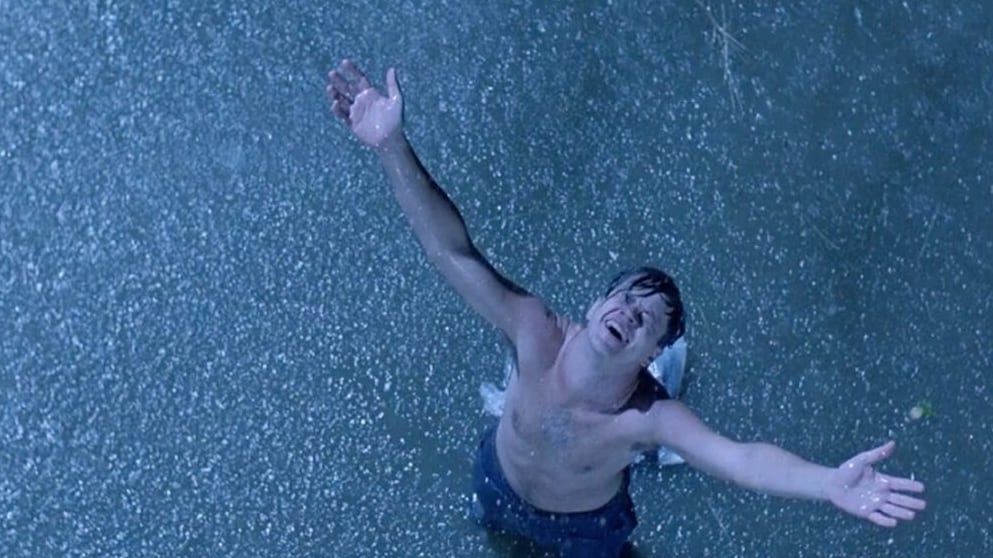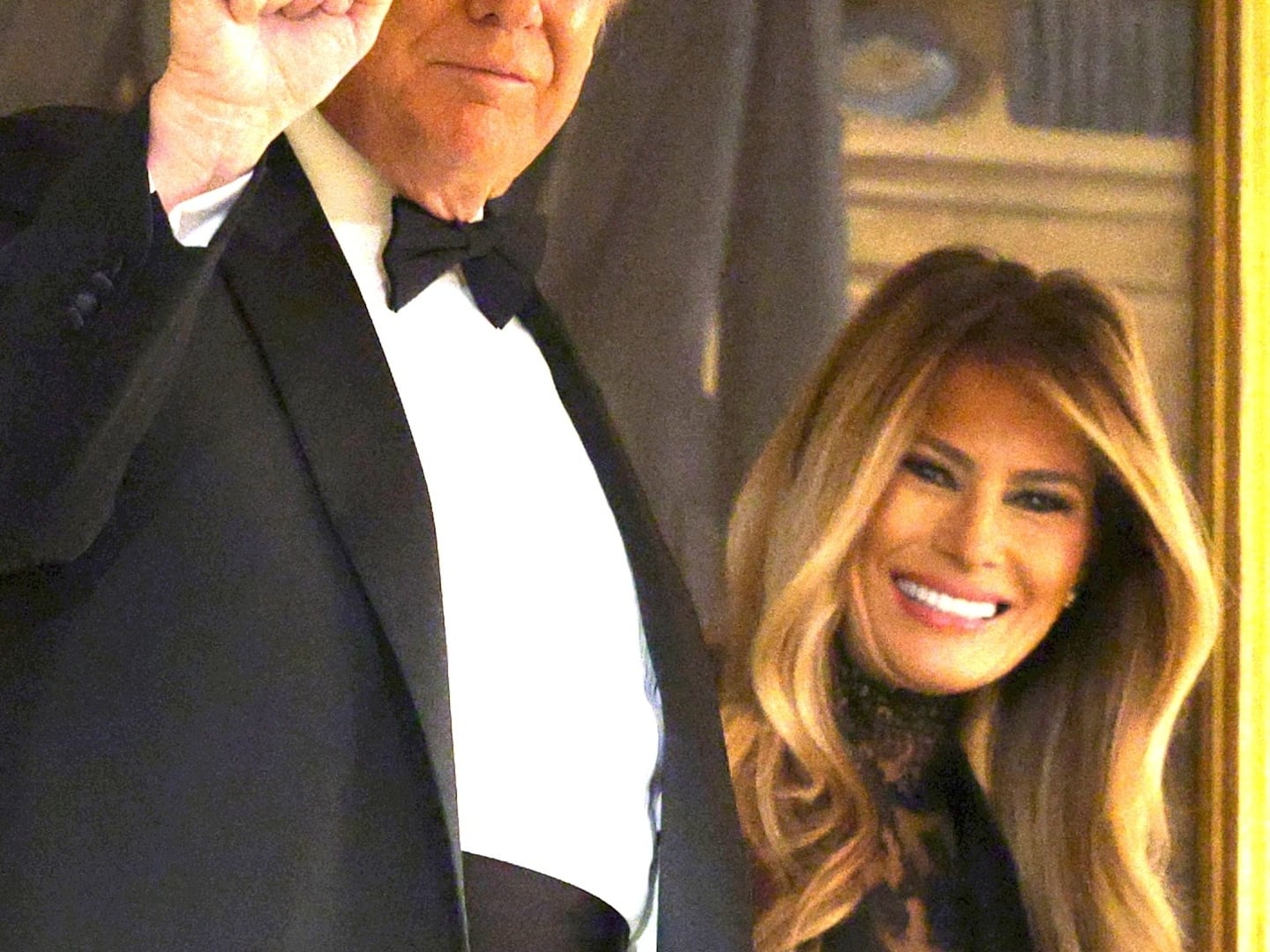Hope. It’s a hard thing to hold onto at the best of times, let alone infuse into a movie. Not just any movie either, but one that regularly appears on lists of the greatest movies ever made. However, against all the odds, it’s something that filmmaker Frank Darabont managed to do with his life-affirming classic The Shawshank Redemption.
“The movie’s like a Rorschach test,” suggests Darabont, speaking to us as his enduring prison drama starring Tim Robbins and Morgan Freeman turns 30 years old. “People can project their own traumas and difficulties onto that film and gain some uplift and encouragement from it, and that’s pretty cool. It’s not a feeling you get that often as a filmmaker,” he adds. “To have even one of those in your life is a real gift.”
Helping fans overcome odds is a rather apt legacy for Darabont’s 1994 drama. An adaptation of Stephen King’s 1982 novella Rita Hayworth and Shawshank Redemption, it tells the story of Andy Dufresne, a wrongly imprisoned convict and the only innocent man in Shawshank State Penitentiary. It’s here, locked inside this brutal and unforgiving institution, where Andy meets fellow lifer Red (Freeman) and has his relationship with hope put to the ultimate test.

After many years and plenty of dark moments, hope finally reveals itself to Andy in an unlikely escape that sees him hack through the prison walls and literally crawl through a “river of s--t” to reach salvation. Even now, three decades later, it’s hard not to have your faith in life restored while watching Andy finally find himself a free man, standing arms stretched in the pouring rain. No wonder The Shawshank Redemption has changed so many people’s lives.
“It hasn’t really gone away,” says the 65-year-old director, who until recently was comfortably retired before the Duffer brothers lured him back into the director’s chair for Stranger Things’ final season. “Its initial release wasn’t that successful. In fact, I wouldn’t even call it a success. It was kind of a marginal failure in 1994 yet it became the most rented video of 1995. I think that was for a number of reasons, primarily because it was nominated for seven Academy Awards,” he explains. “We didn’t win a stinking award but it really piqued people’s interest.”
A near-constant stream of cable TV showings did the rest of the legwork, helping to cement his film into the hearts and minds of audiences across the world. “It kind of put it in the same category as The Wizard of Oz or Casablanca,” Darabont suggests. “Not in terms of quality, but once you get played regularly on television, audiences can really discover it and that’s what happened to Shawshank,” suggests Darabont. “I’m delighted people love it so much.”
Looking back now, Darabont says the film feels like an “artifact”, created by a different person in a different headspace. It’s hard to believe but The Shawshank Redemption was Darabont’s first movie, tackled after he’d already turned another King short story, The Woman in The Room, into a short film. While he calls that effort a “very creaky, earnest young filmmaker’s first attempt at doing something,” it was good enough to convince King to let him take on Shawshank next.
“I asked [King] for the rights and he said, ‘Sure, no problem.’ Then five years went by,” says Darabont, recalling how it took his breakout success co-writing A Nightmare on Elm Street III: Dream Warriors to finally convince him he was good enough to adapt the story. “I wrote the script in eight weeks and the first place I sent it was Castle Rock Entertainment, specifically because of Stand By Me. I thought that any company based on the success of a Stephen King adaptation that good would certainly get what I was trying to do with Shawshank.”
Darabont’s screenplay landed on the desk of then-studio executive Liz Glotzer, who immediately saw its potential. “She marched into her boss’ office, slammed the script down and said, ‘If we don’t make this movie, I quit’, which is the best endorsement you can possibly get,” he chuckles. That said, his chances at directing it were almost undone when Castle Rock boss Rob Reiner showed an interest. However, despite rumors to the contrary, Darabont assures these discussions were more than amicable.
“[Castle Rock] asked if I was interested in letting Rob direct it,” he recalls. “”He’d worked with Tom Cruise on A Few Good Men and Shawshank would’ve been their follow-up,” he says. Ultimately, his love for the text made it hard for Darabont to agree: “I just couldn’t say yes and they were very gracious in taking my ‘no’ for an answer. Rob was a real mensch and such a great supporter of the project after that. It really says a lot about his character.”
With that, not only was Darabont signed on to direct but granted final cut over his directorial debut. Even from the early stages, the filmmaker was clear on what type of story he wanted to tell. “You’re telling a story of hope versus no hope and that’s represented by Andy on one hand and Red on the other,” he tells us.
For the former, Darabont enlisted Robbins, an actor whose largely silent performance as Andy manages to convey the weight of the world in simple, often pained expressions. “It was a suggestion from Morgan,” says Darabont of the casting. “We were racking our brains on who could play Andy and he suggested Tim. I rewatched Jacob’s Ladder and thought their chemistry could be interesting because they’re so different. Also Tim’s enigmatic quality… He looks like he’s carrying a secret around with him and that sums up Andy’s character.”
Once cast, Robbins was so dedicated to the role that he spent time in solitary confinement to get into Andy’s claustrophobic headspace. “Not overnight though,” reveals the director. “After an hour or two he said, ‘OK, that’s enough’ and I don’t blame him.” Meanwhile, for Red, Freeman delivered his own expertise: “He brought a wisdom and a gravitas,” says Darabont. “He capitalized on that sense of experience but underneath, there was just enough warmth that you fell in love with the guy.”
Joining his leading duo was an ensemble cast populating Shawshank’s dank cells and shady corridors. From James Whitmore’s aging and institutionalized inmate Brooks and William Sadler's loveable convict Heywood, to Bob Gunton’s sadistic Warden Norton and Clancy Brown as his heartless enforcer Captain Hadley. For Darabont, it was a baptism of fire in working with actors of all types.
“I learned that every actor is different and has differing needs from a director and I had the perfect examples in Morgan and Tim,” he says of the experience. “Tim approaches things from an intellect standpoint which seeps into his intuition and performance; he needs more conversation about backstory and motivation whereas Morgan is purely intuitive.”
Darabont recalls discovering this on the job during a conversation he was having with Freeman about an upcoming scene: “I could see his eyes glazing over. I stopped myself and said ‘You don’t need all this conversation, do you?’ He said, ‘No not really. I just need to know when you want me to turn left and when you want me to sit down.’ That taught me a valuable lesson that every actor has a different approach.”
When shoot days were over, Darabont would retreat from the movie’s prison set (he shot almost entirely in Mansfield’s Ohio State Reformatory) and take inspiration from an unlikely source. “I’d pop in my Goodfellas tape and watch Scorsese’s masterful handling of a story with a lot of narration at a time where narration was being called into question,” he says, referencing his handling of Shawshank’s now-iconic movie narration, courtesy of Freeman. “The two movies are very different in pretty much every way but they share this commonality which is time passage and narration. I’d watch Goodfellas to bolster myself for the coming week of shooting.”
Of all the memorable moments The Shawshank Redemption has to offer, few are as powerful as Andy’s grand escape, a scene that finds him thrust out of a sewage pipe and into a dirty overspill. It was a sequence Darabont had in mind from the get-go but shooting it couldn’t have been further removed from the joyous experience of seeing it on screen.

“It’s a glorious moment, right? Everybody feels their soul being uplifted. Meanwhile, we were out in this horrible little creek that was filled with cow poop,” reveals Darabont of crafting this key moment. “They had to dam the creek to get the water level up and pour sterilizing stuff in there so Tim wouldn’t get some horrible disease. Actors can be real troopers sometime because sliding out of that pipe into that muck was so gross. To convey that incredible moment while covered in cow urine? It’s amazing.”
Amazing it is—and through its performances and Darabont’s direction, the movie’s legacy of hope has lasted three decades. “I find it very fascinating and gratifying because it is a movie about hope. It’s about redemption and how we can improve the world around us,” says Darabont. “I’ve gotten letters from people who have seen the movie and it changed their lives. That’s a profound legacy.”
It’s a legacy made brighter knowing that Darabont finally finds himself back in the director’s chair after a long break. Having last directed episodes of 2013’s Mob City, he’s been lured out of retirement to helm key installments of Stranger Things’ fifth and final season. And much like The Shawshank Redemption, it’s the show’s uplifting vibe that finally convinced him to un-retire.
“What really dragged me out of retirement was that my wife and I really love this show,” reveals Darabont. “Our content now is so filled with horrible people doing horrible things for greedy reasons but Stranger Things has so much heart. That positivity is something I really responded to.” So does this mean he’s back for good? “Who knows?,” he admits, leaving the question tantalizingly open. “I haven’t missed the business but I have missed being on set with creative people… It may well be one and done, but we’ve still got time.”






